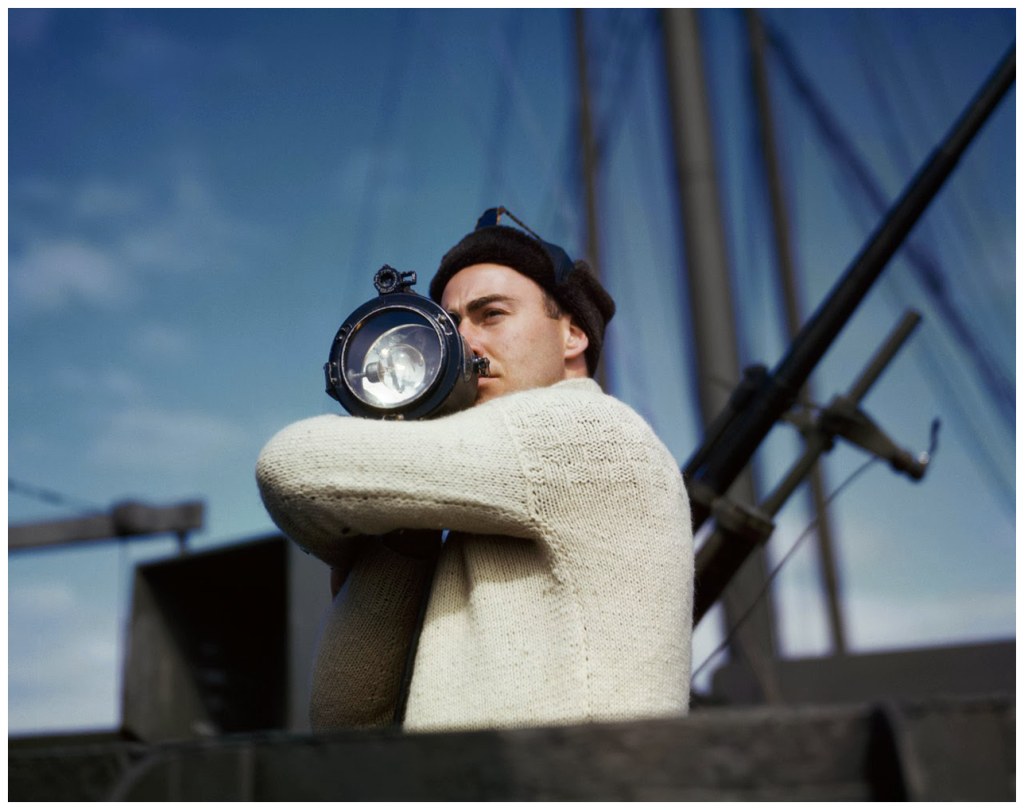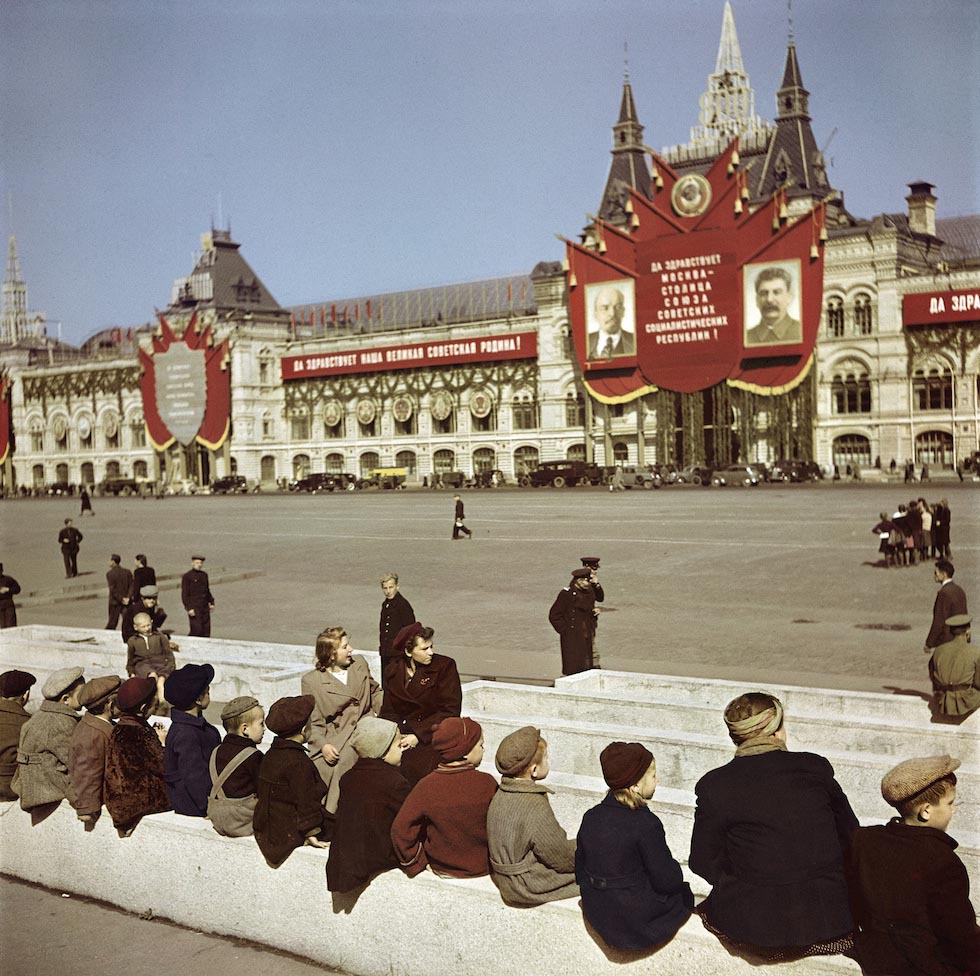Siamo andati a vederla, e vogliamo condividere con voi le nostre impressioni su un allestimento non comune per qualità delle immagini, documenti e memorabilia che lo completano.L'International Center of Photography di New York, con la mostra conclusasi il 5 maggio, ha svelato al mondo le foto a colori di Robert Capa: un evento questo perchè, fino ad oggi, nessuna delle retrospettive a lui dedicate le aveva mai incluse.La mostra è stata suddivisa in 15 sezioni, per un totale di 137 foto in medio formato e 35 mm. Per arricchire l’esperienza e completare la figura di Capa, in esposizione sono state offerte al pubblico anche alcune lettere che Capa inviò al fratello, al suo agente e ai suoi soci della neonata Magnum: ogni missiva ci rivela un personaggio estremamente ironico, entusiasta innamorato del suo lavoro e sinceramente generoso.La sensazione, camminando tra le foto esposte, è quella di entrare in un film: come se all'improvviso si rimuovesse un filtro, lo svelamento del colore a partire da un mondo che per migliaia di volte si è visto solo in bianco e nero è senz'altro uno shock, ovviamente positivo. Capa è tuttora considerato il reporter di guerra che ha documentato in bianco e nero gli eventi più importanti della metà del 20° secolo ed è sorprendente, per me e forse anche per molti, che invece dal 1941 egli abbia fotografato a colori, non soltanto occasionalmente ma proprio regolarmente.Il suo amore per il colore nasce nel 1938, due anni dopo la nascita del Kodachrome, il primo rullino a colori. Si trovava in Cina e da lì scrisse al suo agente “mandami immediatamente 12 rullini Kodachrome con tutte le istruzioni, ho un'idea per Life". Solo quattro delle immagini che scattò in quella circostanza sono sopravvissute, ma da allora il colore per Capa rimase una continua aspirazione.In quel periodo, sviluppare a colori non era facile, né conveniente, soprattutto per un fotografo di news: Kodak infatti aveva mantenuto segreta la sua formula di sviluppo e questo rendeva necessario inviare i rullini nei suoi impianti e poi attendere altro tempo per riaverli indietro. L'intero processo poteva durare settimane.
Tuttavia, Capa non mollò: passò molto tempo a cercare di convincere i photoeditor a comprare le sue foto a colori in aggiunta a quelle in bianco e nero.
Dopo la guerra e con il nuovo clima generale più ottimista verso il futuro, i magazine divennero più propensi ad acquistare immagini a colori e così i suoi incarichi a colori aumentarono: da allora in poi, per il resto della sua vita, portò sempre con se due macchine fotografiche.Camminando attraverso le sale della mostra si compie un viaggio verso le destinazioni più disparate: dalle foto della seconda guerra mondiale agli intimi ritratti di Picasso con la sua famiglia, da quelle scattate sui set cinematografici ad altre scattate in URSS in compagnia dello scrittore Steinbeck con cui volle raccontare i comuni cittadini russi in opposizione alla retorica della Guerra Fredda.
Si sorride poi vedendo le ironiche immagini scattate in alta montagna nelle località sciistiche in voga all'epoca, e poi ci si ritrova anche Parigi, città in cui Capa visse dal 1933 al 1939.
Nell'estate del 1951 Capa andò in Norvegia per la rivista Holiday e ci tornò anche l'anno dopo per raccontare le Olimpiadi. Nell'articolo che accompagnò le foto, Capa scrisse "Per anni ho incontrato e ho fotografato re, contadini e commissari e sono giunto all'idea che - al giorno d'oggi - la curiosità, sommata alla libertà di viaggiare e a delle tariffe economiche per farlo, è ciò che esiste di più vicino alla democrazia... quindi forse la nostra democrazia oggi è il turismo".
Il suo viaggiare per il mondo e la sua continua curiosità di scoprirlo fino in fondo, ci fa capire come ci credesse veramente.
Capa è sicuramente un fotografo indimenticabile e questa mostra ha sicuramente segnato una svolta nella conoscenza della sua opera.
Mariateresa dell’Aquila
ENGLISH VERSION
We went to see it first-hand and now we want to share our impressions with you - a curation that is quite uncommon in its genre due to the quality of images, documents and memorabilia that comprise it.
Standing before Capa’s photos in colour was a sheer shock, an absolutely positive milestone in our life. Suddenly you get the feeling to be catapulted right into a movie, to be seeing in colour what had been displayed in black & white countless times - aside from the colour pictures featured in fictional movies. Many will feel greatly surprised by the fact that Robert Capa actually shot in colour, so more so considering that post 1941 it wasn’t an occasional decision, but a regular practice of the genius.
That’s why these photos are virtually still unknown, despite the fact that Capa is currently being regarded as the war reporter who documented the most influential events of the second half of the XX century. In colour.Capa’s love for colour springs out in 1938, 2 years upon the birth of Kodachrome - the first photo film in colour. He was in China when he asked his agent to immediately send him “12 Kodachrome films with all the instructions: I’ve got an idea for Life”. Unfortunately, only 4 of those shots have survived, but colour remained one of his constant aspirations.Those days it wasn’t easy to develop in colour, because it would take weeks to retrieve the developed negatives. In fact, Kodak had kept extreme secrecy around their exclusive development formula, which in turn rendered it necessary to send films to their factories and wait even longer to get them back.Although this process didn’t prove ideal for a news reporter, Capa invested great efforts in trying to convince photo editors to buy his photos in colour, in addition to the black & white ones. In the aftermath of the war, papers finally started opening up to the idea of purchasing photos in colour - which lead to an increase in his assignments, too. Ever since that moment and for the rest of his life, Capa would always travel with two cameras.In a world such as photojournalism - then absolutely dominated by the use of black & white photography - Capa was determined to persevere in the use of colour. And despite the obvious diminished level of graveness of the post-war shots in colour if compared to his most famous ones, we can still admire a renewed playful spirit and a more hopeful vision of the future world in his latest work - which was certainly highly appreciated by the magazines of the time.
The exhibition comprised 15 sections, for a total of 137 photos in medium format and 35mm. In addition, it featured some of the shots Capa sent to to his brother and agent - the latter giving us a taste of an extremely ironic character, a work enthusiast and a sincerely generous soul.
Walking through the rooms of the exhibit, one enjoyed the experience of switching from post-WW2 photos to the intimate family portraits of Picasso, from stolen shots on cinema sets to photos of his travelling to the USSR with Steinbeck, to recollect opinions of the common citizens against the Cold War rhetorics. Not to mention the ironic images of the poshest ski-resorts of the time that certainly put a smile on the viewer’s face - and the shots of Paris, where Capa lived between 1933 and 1939.
In the summer of 1951 Capa travelled to Norway for Holiday and he returned there the following year for the Olympics.
In the article attached to the photos, Capa wrote: “For years I have met and photographed monarchs, peasants and commissars, and I’ve come to the conclusion that curiosity, joint with the freedom of travel and the cheap costs to do so, is the closest thing to democracy… Therefore tourism is our democracy, perhaps”.
An unforgettable photographer and an exhibition that will mark a definite turn in the understanding of Capa’s work.
Mariateresa dell’Aquila
We are a self-funded intiative, and we rely on the expertise each of us has gained in his/her field of specialty. Whilst presenting our interviews and articles, we are looking forward to your feedback to help us improve our English version - anything related to specific words, phrases or idiomatic expression, or any other annotation you might deem useful.
Please email us at info@phom.it.


